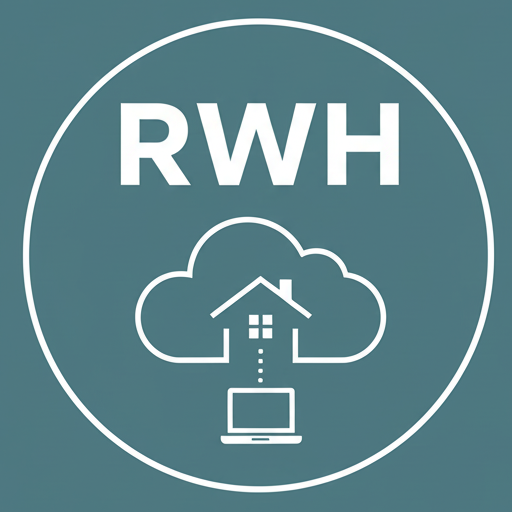The Myth That Keeps Failing
Everyone thinks working from home is the dream.
No boss hovering. No commute. Pajamas all day.
But give it three months—maybe less—and most remote workers are drowning in:
- Missed deadlines
- Sleep-deprived mornings
- Noise from the kitchen, the kids, or the street
- Fatigue that hits harder than any office shift ever did
Freedom without structure is failure in slow motion.
Working from home is only sustainable if you build the systems that make it durable.

1. The Problem Isn’t You — It’s the Absence of a System
You’re not lazy. You’re unsupported.
Most remote workers have no blueprint. They’re thrown into a home office—or worse, a laptop-on-the-couch setup—and told to “be productive.” That’s like handing someone weights and expecting them to deadlift without a spine.
Let’s be clear:
Remote work without a structure is just chaos with Wi-Fi.
There’s no real start. No clear stop. No accountability layer unless you build it.
You don’t need flexibility. You need a playbook.
2. The Bare Minimum WFH Stack That Actually Works
Forget productivity hacks. You need infrastructure.
This is your baseline:
🪑 Chair That Supports, Not Collapses
- Adjustable lumbar support
- Firm seat pan, no plush trash
- No armrest wobble
🛑 Stop buying “ergonomic” chairs with curved backs that destroy your spine.
📌 Stop Buying ‘Ergo’ Chairs That Suck – HF
🖥 Visual + Audio Isolation
- Headphones that cancel, not leak
- Monitor height = eye level. Period.
- 5K lux light source (you’re not in a cave)
🛠 Desk That Enforces Posture
- No rolling carts
- No “lap desks”
- Adjustable standing desk only if you use it correctly
📌 Your Home Office Is a Control Room
3. Your Brain Needs a Routine It Can Predict
This isn’t just about task lists. It’s about neurochemical balance.
Your brain burns more fuel switching contexts than it does doing the work. So if you’re jumping from Slack to email to chores to lunch to more meetings, you’re not multitasking—you’re cognitive bleeding.
You need:
- A boot sequence (wake → move → prep → start)
- A defined deep work block (no meetings allowed)
- A mid-day reset protocol (walk, food, music—same time daily)
- A shutdown stack that ends the workday before your body collapses
🧠 Consistency ≠ boredom. It’s how your prefrontal cortex stays online.
4. Remote Burnout Feels Different — But It’s Just as Deadly
Office burnout is visible. Remote burnout hides behind:
- Fake energy spikes
- Late-night “catchup sessions”
- Deteriorating memory
- Rage at small things (Slack, calendar, barking dogs)
By the time you realize you’re burnt, you’re already deep in a recovery deficit.
Signs to watch:
- You wake up tired no matter how long you sleep
- You feel guilt for “not doing enough,” even when you worked 10 hours
- You can’t remember what you finished this week
📌 You’re Not Resting — You’re Just Pausing Or: Recharging Is Not a Reward — It’s Non-Negotiable
5. The Remote Work Fix No One Talks About: Context Partitioning
Your brain needs clean context layers to survive long-term.
Most remote workers operate in “blended mode”:
- Slack while eating
- Email in bed
- Calls in the car
- Half-work during family time
Context partitioning is how you regain focus and energy.
Create physical and mental boundaries:
| Layer | Partition |
|---|---|
| Focus Work | Door closed. Full-screen. No notifications. |
| Async Work | Standing desk. Lo-fi audio. 90-min windows. |
| Admin | Seated posture. Task queue. Short form only. |
| Rest | No laptop. No workspace crossover. No screen feedback. |
Train your body to associate each zone with a specific mental state.
6. This Isn’t “Work From Home” — It’s Operational Deployment
If you treat remote work like a privilege, you’ll burn out trying to prove yourself.
If you treat it like a vacation, you’ll rot.
But if you treat it like a tactical deployment, you’ll build:
- Repeatable success patterns
- Mental uptime cycles
- Physical gear setups that protect your body
- A reputation for reliability, not just presence
📌 Remote Work Discipline Is the New Job Security
TL;DR (for the skim-and-suffer crew)
- 🎯 Remote work without structure = disguised failure
- 🪑 Setup matters: your chair, desk, and lighting are your workflow
- ⏱ Routine > motivation. Brains crave predictability.
- 🧠 Burnout hides better remotely. Catch it early.
- 🔒 Context is king. Boundaries = survival.
- 🛡 Treat remote work like a deployment, not a flex

